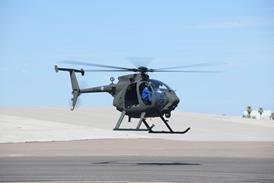The major US airlines ended 1997 with their strongest profits on record, but the celebrations were accompanied by the promise of more turbulence ahead, with the fall-out from Asian economic crisis and the prospect of a renewed round of consolidation closer to home following the Continental/Northwest Airlines tie-up.
With only Trans World Airlines (TWA) still to report, the major groups had already breached the $5 billion net-profit barrier. Excluding one-off charges, the 1996 corporate total, itself a record, had come in just short of $4 billion.
Traffic continued to grow at a healthy 5%, fuelled by domestic demand, while restrained capacity growth helped load factors to a system-wide high of 71%. There was more good news on yields, again led by US markets. Fuel costs were down by 10-15% after the 1996 hike, and look unlikely to soar again.

Financial analysts are upbeat that the industry will maintain its performance into the first half of this year, although uncertainties remain over the impact of a prolonged Asian crisis and the possible timing of a slowdown in the US economy. The concerns are echoed by the US Air Transport Association. It estimates that US airline operations ended 1997 with net profits of $4-4.4 billion, but warns that economic slowdown could bring that closer to $3 billion in 1998. Dominant transpacific carriers Northwest and United Airlines have outlined plans to rein back on services to Asia. Northwest, which has already felt the impact of the tumbling yen on its international yields, plans to cut back on capacity to worst-hit Asian destinations, led by South Korea. Traffic to Japanese tourist destinations are also described as "soft". The airline plans to cut Asian capacity by 10% in the first quarter, with a further 13% by mid-year.
United also plans to bring down transpacific capacity by about 11% by the end of February as it moves off routes to Guam and Manila, and halves services to Hong Kong. The airline's yields on the Pacific slipped by 7% in the December quarter, while transatlantic and Latin American routes came under pressure from increased competition. The airline predicts that yields will fall by 5% across its international operations in the first quarter this year.
Although it sees no immediate cause for alarm, United officials admit that profits will be flat for the start of 1998, marking the end of 19 quarters of consistent improvement.
Elsewhere, Continental is cutting capacity within its Micronsesia fleet, based at Guam, bringing five aircraft back to mainline services.
While the repercussions of the Asian crisis are, as yet, well contained, some financial analysts have warned of cut-throat competition breaking out in other markets if and when aircraft capacity is redeployed on other long-haul routes, in particular the North Atlantic.
Analysts have also speculated on the reaction of other US majors in the wake of Northwest's tie-up with Continental, to be sealed with a 14% equity stake. As the 1997 figures show, the airlines would have combined sales and traffic figures on a scale to stand alongside leaders American and United.
US Airways' shares rose sharply on the news, with anticipation that it could be put back into play as a merger partner. A year ago, it held exploratory talks with United, provoking American to open its own negotiations. TWA is also seen as a candidate for take-over, depending on the progress of its recovery.

Source: Flight International























